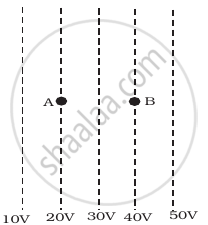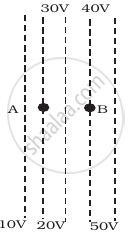Advertisements
Advertisements
Question
Depict the orientation of an electric dipole in (a) stable and (b) unstable equilibrium in an external uniform electric field. Write the potential energy of the dipole in each case.
Solution
- The dipole is in stable equilibrium when it is parallel to the electric field (i.e., the angle between the dipole moment and the electric field is 0°).
- When the dipole is aligned anti-parallel to the electric field (i.e., the angle between the dipole moment and the electric field is 180°, then the dipole is in unstable equilibrium.
For stable equilibrium (θ = 0°)
Potential energy U = -pE cosθ
U = -pE
For unstable equilibrium (θ = 180°)
Potential Energy U = -pE cosθ
U = pE
APPEARS IN
RELATED QUESTIONS
A charge of 8 mC is located at the origin. Calculate the work done in taking a small charge of −2 × 10−9 C from a point P (0, 0, 3 cm) to a point Q (0, 4 cm, 0), via a point R (0, 6 cm, 9 cm).
Figure shows a charge array known as an electric quadrupole. For a point on the axis of the quadrupole, obtain the dependence of potential on r for r/a >> 1, and contrast your results with that due to an electric dipole, and an electric monopole (i.e., a single charge).

Work done by a uniform electric field 'E' in moving a charge 'q' at a distance 'd' from a to b is ______.
Figure shows some equipotential lines distributed in space. A charged object is moved from point A to point B.
 |
 |
 |
| (i) | (ii) | (iii) |
